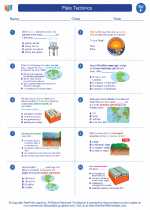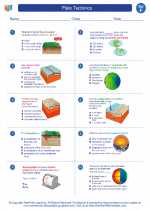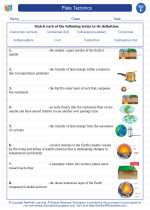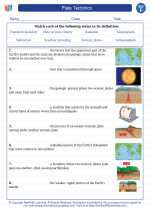Silicon
Silicon is a chemical element with the symbol Si and atomic number 14. It is a hard, brittle crystalline solid with a blue-grey metallic lustre. It is a tetravalent metalloid and is a member of group 14 in the periodic table, along with carbon above it and germanium, tin, and lead below. It is not found free in nature but occurs chiefly as the oxide and as silicates. Silicon is the seventh most abundant element in the universe and the second most abundant element in the Earth's crust, making up 27.7% of the Earth's crust by mass.
Physical and Chemical Properties of Silicon
- Melting Point: 1414°C
- Boiling Point: 3265°C
- Density: 2.3296 g/cm³
- Electronegativity: 1.90 (Pauling scale)
- It has a relatively high thermal conductivity and low thermal expansion.
- It does not react with most acids but is dissolved by hot, concentrated hydrofluoric acid.
- It forms various compounds with carbon known as organosilicon compounds or silicones.
Uses of Silicon
Silicon has widespread industrial applications, from use in semiconductors and solar cells to being used in the production of glass, ceramics, and concrete. It is also used as an alloying element in the production of steel, as a deoxidizing agent in the production of iron, and as a constituent of some superalloys. Additionally, silicon is an important component of many rocks and minerals.
Study Guide
When studying silicon, it is important to understand its physical and chemical properties, its abundance in nature, and its wide-ranging applications in various industries. Be sure to familiarize yourself with the periodic table and the group to which silicon belongs. It may also be helpful to explore the role of silicon in semiconductor technology and its impact on modern electronics.
Additionally, understanding the formation of silicon-based compounds and their uses in everyday products can provide a comprehensive understanding of the importance of silicon in our world.
For a more in-depth study, consider researching the environmental impact of silicon production and its role in sustainable energy solutions such as solar power.
[Silicon] Related Worksheets and Study Guides:
.◂Science Worksheets and Study Guides Sixth Grade. Plate Tectonics

 Worksheet/Answer key
Worksheet/Answer key
 Worksheet/Answer key
Worksheet/Answer key
 Vocabulary/Answer key
Vocabulary/Answer key
 Vocabulary/Answer key
Vocabulary/Answer key
 Vocabulary/Answer key
Vocabulary/Answer key
 Vocabulary/Answer key
Vocabulary/Answer key
